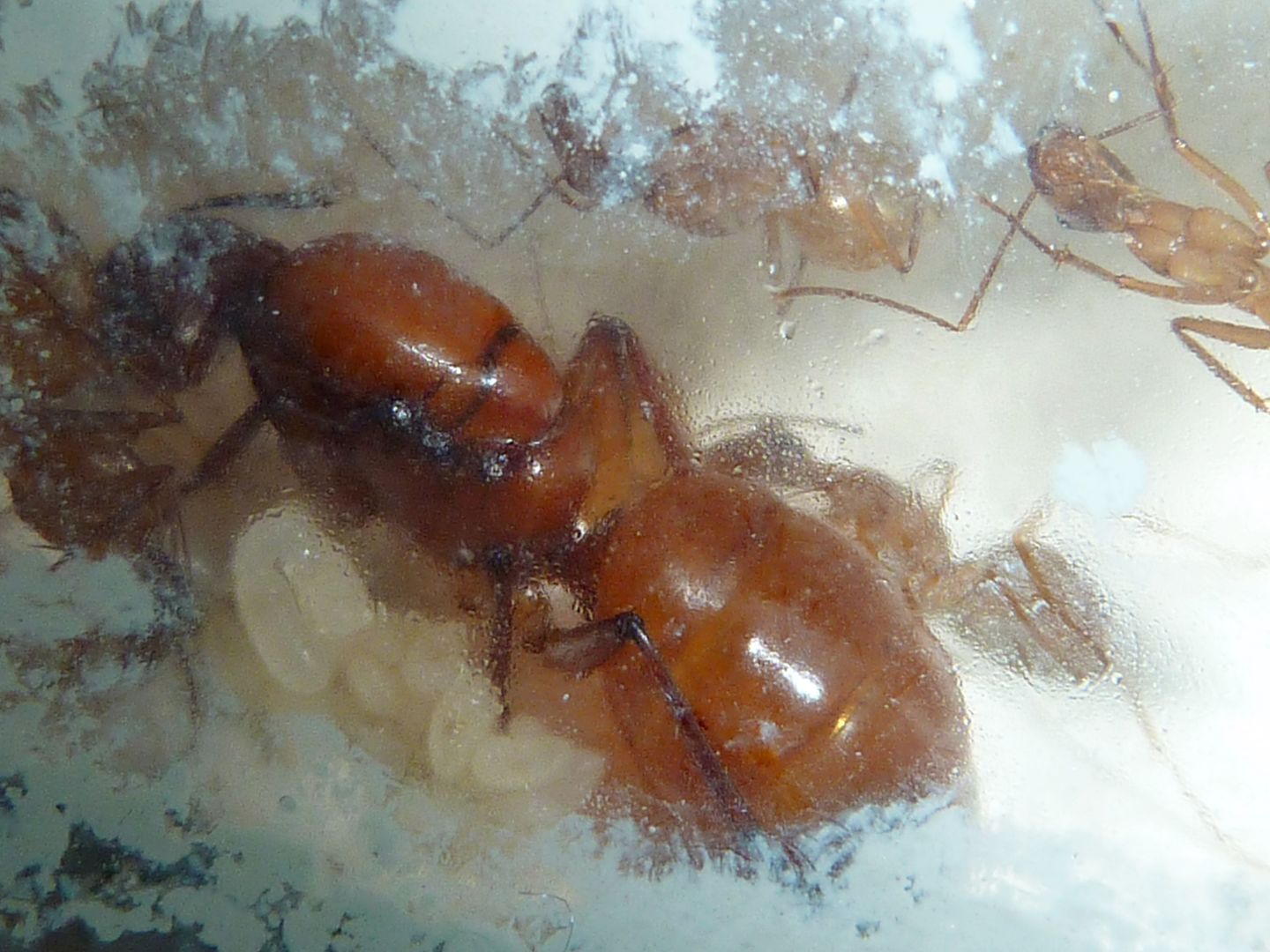Well I finally got around to taking a picture of the developing brood. They haven't grown much but I'm sure they'll have made great strides by April, maybe new workers by May.
You can make out the one closest to the queen's head (to the left) is nearly double the size of some of the others. I've started feeding them regularly again but I don't think they've found the food. I'll try forcing it on them later on.
My colony of Prenolepis imparis has been doing almost nothing. These are considerably boring ants in all honestly but I love them because they fly early in the year. Wild colonies are probably holding their nuptial flights in parts of the US that are close to or above 70F.
I didn't notice it at the time but if you look at the worker 2/3rds down on the left side, the one facing the right, she's holding an egg! I've had colonies of these before and they always die off because of a failed batch of brood. I believed their diet focused almost entirely on sugar. This colony as you can see is well fed but I focused on protein just as much.
Here is a little better photo where the egg is easier to spot. Notice the different sized heads to the workers in the middle. That's a sign of a good diet in a colony. Usually larger head size (larger caste in general) early on is a sign of good health. Smaller workers are cheaper to produce but aren't as developed as they could be and that usually means they don't live as long.
I'm also happy to see the queen still has some of her original color. I notice that this seems to fade with time. Younger queens seem brighter in color for this species. The browns are more dull orange, the red thorax is a very soft mix of rose red and salmon which is the best I can describe it. Happy Hunting.


